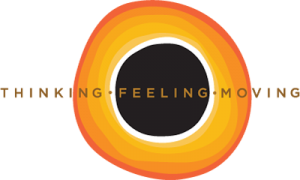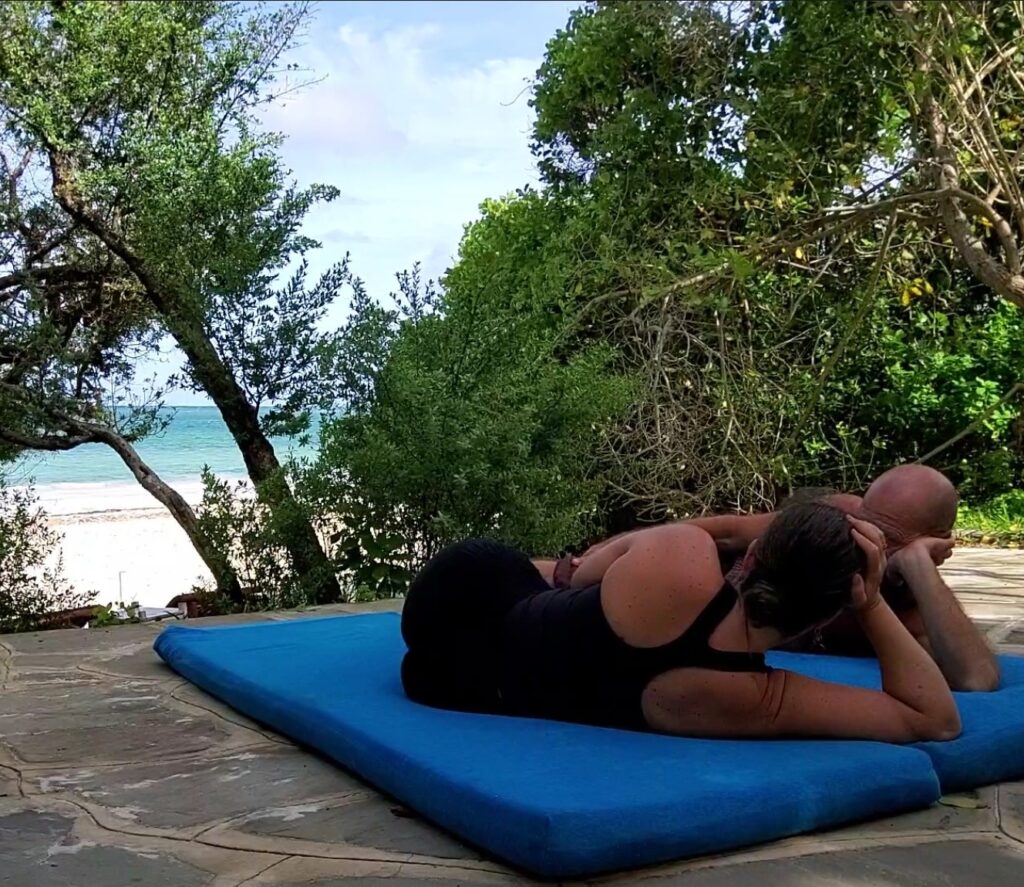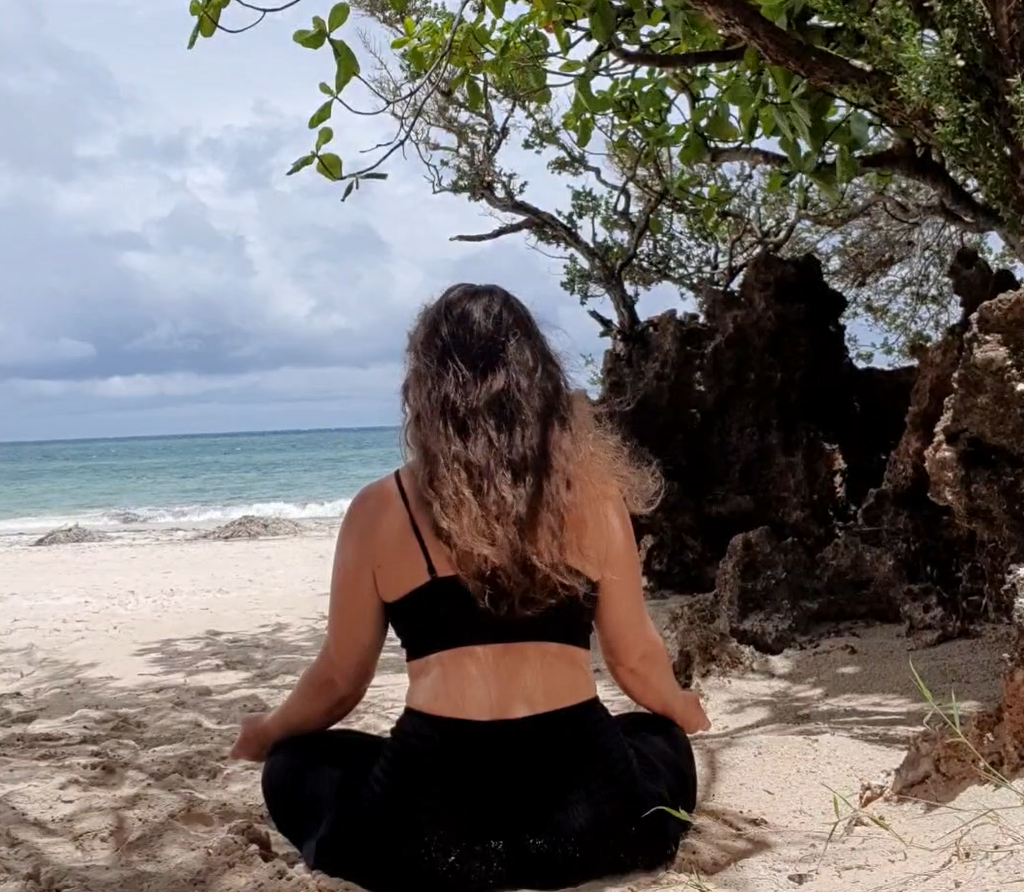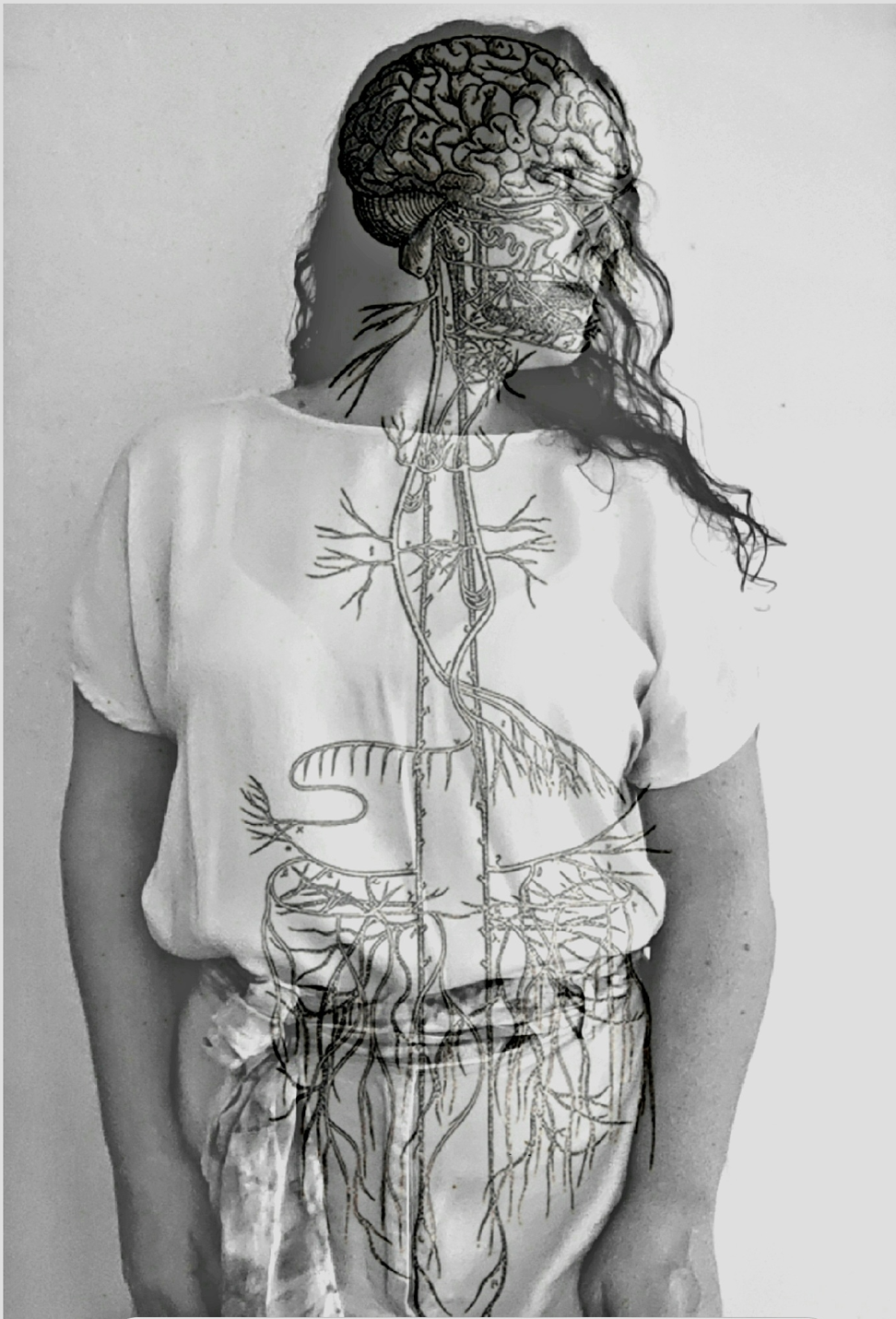
The Vagus Nerve is responsible for the engagement of both the sympathetic and parasympathetic nervous systems.
What is the Vagus Nerve?
The Vagus Nerve is the longest nerve of the autonomic nervous system in the human body and comprises both sensory and motor fibres. It starts at the back of the brain reaching all the way down to the pelvic floor and genitals. It is responsible for the engagement of both the sympathetic and parasympathetic nervous systems
It sends messages from the brain to the body, and messages from the body back to the brain. This is an important function, as sometimes our bodies can feel stuck in a stress response when our mind is feeling calm. This can be challenging at any time but particularly when we are wanting to be sexually intimate, connecting our thoughts, feelings and body.
Cortisol and adrenalin can be surging through our body when it isn’t needed making it feel that it is not safe and under attack when it isn’t.
Our brains can think that there is a threat telling our bodies to be ready to respond. Our bodies can be in a state of fright, freeze, flight or faun even when there actually is no threat. The sympathetic nervous system is being engaged at this point.
These responses can show up when we are wanting to engage in sex (partnered or solo) making it difficult to connect without our bodies and with pleasure. It can get in the way of connecting intimately with partners too. It can be harder to get aroused, stay aroused, with getting and keeping erections and also to orgasm.
It’s about getting the right balance. We need to have the right amount of engagement of both the sympathetic nervous system (SNS) and parasympathetic nervous systems (PNS) to access pleasure rather than being stuck in the fright, freeze, flight or faun responses.
In order for the body to be relaxed to access pleasure with ourselves and perhaps with a partner/s the parasympathetic nervous system needs to switch on. If we have sexual intimacy and the parasympathetic nervous system isn’t engaged it stifles our ability to enjoy touch, share intimacy, feel connected, get and maintain erections and orgasm. When you feel relaxed, calm, safe and in control of your body you will know that your parasympathetic nervous system being engaged.
The Vagus Nerve and its importance during intimacy.
Intimacy is recognised as being intimate with yourself and/or if you choose to be intimate with other/s. Intimacy may or may not be sexual, this is your choice.
During sexual intimacy with yourself or with a partner/s, ideally we want to be in a sexually aroused state where we can have good mindful presence of what is happening, raised heart rate, deeper breaths and good blood flow (SNS engagement) while feeling relaxed, calm and safe in our bodies to release the right hormones such as oxytocin (PNS engagement) in accessing pleasure and for good sex.
Normally the body can switch between the SNS and PNS quite easily. However for many people during sexual intimacy it is harder for their body to engage the PNS due to many things such as feeling sexual shame related to sex from things such as religion, cultural expectations, family, low body confidence, lack of sex education, sexual orientation, gender identity, sexual interests, and trauma.
How to feel safer, feel calmer, and have better intimacy.
Hooray for the Vagus Nerve!
Our vagus nerve is the key to activating the PNS, and being that the Vagus Nerve can send messages from the body back to the brain, we can induce a calm state through various physical experiences (body to the brain), not just by thinking calm thoughts (brain to the body). There are many ways which this can be done. It is very important to practice techniques often and over time you will change the neural pathways in your brain so PNS engagement becomes easier to do. PNS engagement can be done either on your own or with a partner. I shall outline a few options that you can practice regularly.
How to engage the Vagus nerve (solo) for activating the parasympathetic nervous system.
I have a YouTube channel @thinkingfeelingmoving which has a large library of many free videos I have created which you can access for at any time. They are designed to engage your parasympathetic nervous system. Ideally to retrain your brain and body, a daily practice is recommended. I particularly wish to draw your attention to:
- Self-regulation and co-regulation through yoga.
- Restorative Yoga
- Yoga Nidra Mediations
- Yoga Meditation- Awakening Pleasure, a Guided Meditation
Self-regulation and co-regulation through yoga
This is a short practice to demonstrate both solo and partnered practices. Yoga either practiced solo or in partner Yoga stimulates the Vagus nerve activating the Parasympathetic Nervous System response. This helps you to feel calm, safe in your body, less anxious and less reactive to stressors. Partner Yoga builds trust, open communication, intimacy, and feelings of being supported.
Click here to view in YouTube.
Restorative Yoga practice
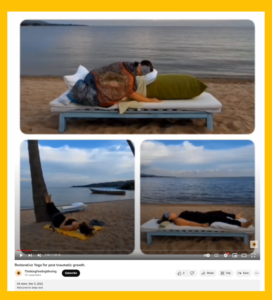
Restorative Yoga for post traumatic growth.
Restorative Yoga for post traumatic growth.
Healing happens in its own time. This is a process which cannot be rushed. Stress and trauma are stored in the body. The body remembers these and can hold on to it unless it is supported to be able to release. The accumulation of stress and trauma leads to dis- ease in the body. Over time this dis- ease if it is not dealt with leads to disease. Through the practice of Restorative Yoga, we will stimulate the Parasympathetic nervous system which evokes a relaxation response. This will lessen inflammation in the body, and inflamed emotions. You will be toning the vagus nerve restoring homeostasis, supporting resilience, and aiding recovery from stress and trauma. Through this practice, you will learn of what the experience is like to feel safe in your own body.
Click here to view in YouTube.

Lisa practicing Yoga Nidra- Yogic Sleep
Yoga Nidra Meditation is a guided meditation designed for you to drop into deep rest. Yoga Nidra (Yogic Sleep) is a form of meditation that has roots in the Satyananda tradition.
“derived from the tantras, is a powerful technique in which you learn to relax consciously.” Yoga Publications Trust (2012).
It is now known that the practice of Yoga Nidra engages the parasympathetic nervous system response which helps practitioners to:
- Engage in deep rest
- Reduce stress
- Increase body-mind connection
- Reduce inflammation
- Increasing the ability to be equanimous and self- regulated so the practitioner is not quite so reactive in stressful situations
- Reduce the physiological impacts of trauma
- Increase the body-mind connection (mindfulness) as the brain increases its neural pathways while experiencing deep rest of the body.
This is a fundamental step in learning to feel safe in the body. Mindfulness is also a fundamental component in sexual pleasure and health. Ideally Yoga Nidra is practiced everyday. A note on why I create Yoga Nidra Meditations: My gift of deep rest via YouTube began during the Covid global lockdowns. I had been giving Yoga Nidras for many years up until then to my students and clients. It was my aim to help people globally to access deep rest and peace at any time, or anywhere they were on the planet.
Awakening pleasure. A guided meditation
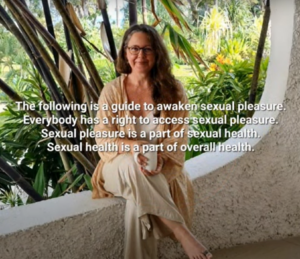
Awakening pleasure. A guided meditation
How to engage the Vagus nerve (solo and partnered) for activating the parasympathetic nervous system.
It’s a good idea to practice any of the following by yourself first to get comfortable doing them. When you feel that you have mastered them, you might like to teach them to your partner/s as a means to practice together increasing intimacy if you are feeling comfortable to do so and feel it is appropriate.
1.Begin by noticing your breath, feel the air move in and out of the nostrils. Observe the feeling of the rise and fall of the chest and belly. Listen to your breathing. Smooth out each breath. Begin to tune in to the feeling of your heart beating in your chest, perhaps place your hand over your heart to feel its beating.

Lisa McGarva -Clinical Sexologist, Relationship Therapist, Counsellor, Yoga Teacher, Yoga Therapist and Educator. Lisa is the founder of Thinking Feeling Moving, an online global Private Practice where clients can access better health in their mind, body, and in their relationships. Online sessions available globally, you may make a booking through the website https://www.thinkingfeelingmoving.com
Clinical Sexology + Relationship Therapy + Counselling. Thinking Feeling Moving is a LGBTQIA+ friendly safe space, GSRD aware and sex positive. Lisa is pluralistic in her approach drawing on many theories and techniques to best suit the client’s needs.
Yoga Therapy sessions. Are programmes which are individually designed for clients. After a consultation, Lisa creates a specialised filmed yoga class just for you. This class can be downloaded to your device. The programme is updated as your body heals and comes back into balance. Yoga Therapy is an intensive individualised programme to bring your body back into balance in recovering from illness, injury, surgery or if you are requiring a practice and have high needs with your body. Lisa is a 500hour trained Yoga Teacher (Yoga Australia), and Certified Yoga Therapist (International Association of Yoga Therapists). Private Yoga Classes are also available online.
Reconnection Retreat. Awaken and expand your sexuality and intimacy possibilities.
A tailored package designed just for you, offering a holistic approach of Clinical Sexology, Relationship Therapy and Yoga Therapy. Elevate your sex life and enrich your relationship/s. This package is for clients who wish to attend Therapy in a concentrated amount of time. Immerse yourself in healing and pleasure, combining it with your time off. A chance to really get away and attend to what is important to your life. Lisa can meet you globally as your personal Therapist at a negotiated destination.
Lisa’s YouTube channel is a space for deep rest where you can find dozens of guided Yoga Nidra Meditations filmed in beautiful places around the world. Access deep rest for your body and mind anytime on your device. Lisa also hosts many interviews with prominent leaders in the areas of Sexology, and Yoga Therapy.
She is global calling a few different continents home which is why she works primarily online. She loves travelling with her Husband who is a fellow explorer in travels, experiences and love.
